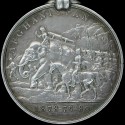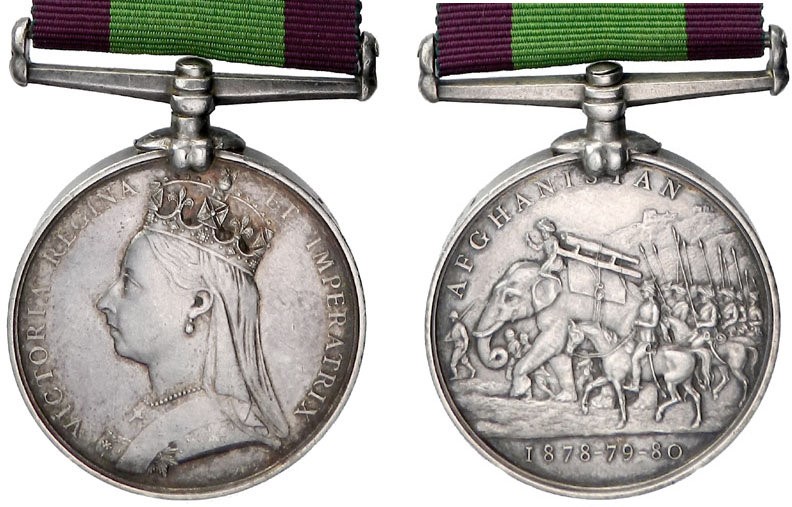A Scion Society of The Baker Street Irregulars

No Bar For Maiwand (1965)
“… I should have had a medal …”
– The Adventure of the Three Garridebs (3GAR)
In dusty corners of old curio shops, there is often a little tray of tarnished trinkets. Amongst the buttons and pen-knives, I have sometimes found an old campaign medal with faded ribbon – and finally, after a long search and many disappointments, Watson’s own medal.
Not, alas, the very one awarded to Asst. Surgeon J. H. Watson, 5th/66th Foot, nor even those of Orderly Murray or Colonel Hayter or Moran, but a fine specimen awarded in that campaign, full of “hardship and sickness,” to a Private T. O’Neil, 1st/25th Foot, with its ribbon of green and purplish red, barely faded.
This medal was (wound pension apart) Watson’s only reward in a campaign “which brought honours and promotion to many” but to Watson “nothing but misfortune and disaster.”
I learned much of its horror from an excellent article in a recent BSJ, by Professor Richard Lesh and shall not attempt to describe them here.
There were six bars for the Afghanistan Medal, for the six victories of Ali Musjid, Peiwar Kotal, Charasia, Ahmed Khel, Kabul and Kandahar. For “fatal” Maiwand – that shattering defeat – there was no bar. Colonel Moran, 1st. Bengalore Pioneers, could of course claim the bars for Charasia and Kabul, also, very probably, the separate Kabul to Kandahar Star.
This medal, apart from its Sherlockian connections, is well worth seeking. I think that it is one of the finest of the Victorian campaign medals. The obverse shows a very Regal and Imperial “Regina at Imperatrix,” and it may be mentioned that the Medal was struck at the Queen’s own request, as she considered that the existing Indian General Service Medal was not adequate recognition.
The portrait of the Queen is engraved by J. E. Boehm and the names of the recipients are engraved along the rim – British troops in Roman Capitals – native troops in italic.

The reverse is much more interesting (see photograph). It is engraved by L. C. Wyon from a drawing by the famous Victorian book illustrator, Randolph Caldecott. Thus:
A column of cavalry and infrantry winds down the rocky road from the hill-fort, high above. At the head, march British infantrymen, followed by a magnificent elephant carrying a heavy gun. Beside him comes the fine horse of a British officer. Could it be the great “Bobs,” himself or one of our Colonels, Hayter or Moran? And, at the rear, comes a great host of turbanned Indian lancers from Bengal or the Punjab.
If you look closely at this picture, the whole campaign seems to come alive. Onc can see the hot sun catching the lances of the cavalry and the bayonnets of the British privates. One can hear the boots of the men ringing on the rocky road, the bugles echoing across the pass, the shouted commands, the jingle and clatter of the horsemen, feel the heat and dust rising from the road.
I like to picture Watson sitting by the fire at 221b on a raw November evening, holding his medal and re-living that “battle long ago.”
Originally published in the Spring 1965 (Volume 7, Number 2, Whole Number 26) of the Sherlock Holmes Journal and is reprinted here with the kind permission of the Sherlock Holmes Society of London.
